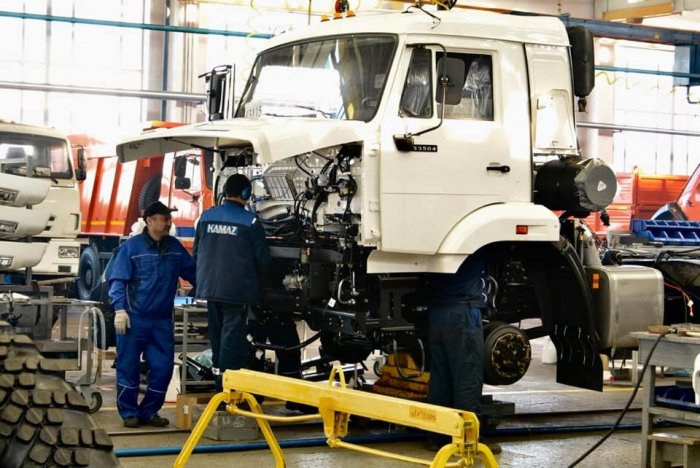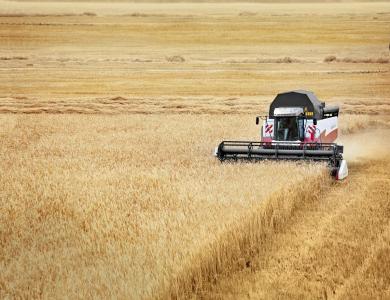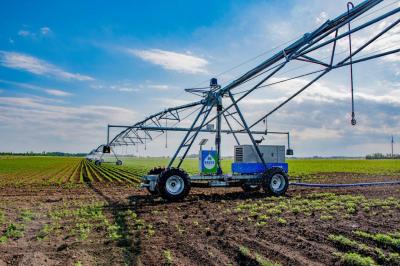
On June 17, the order of the Ministry of Ecology, Geology and Natural Resources on the introduction of utilization fee for agricultural machinery was issued. The order came into force on June 27 (Saturday), so Kazakh farmers have almost lost hope of somehow changing the situation, which, according to them, will truly affect the entire agricultural sector. Agrarians say that by resulting in unjustified price increases for equipment (from 8 to 30%) and the closure of access to innovative agricultural machinery from abroad, the utilization fee will have a much more negative impact on both the owners of farms and the many people working in the agricultural sector, as well as ordinary people in the form of higher prices for products, reports Kokshetau.asia.
Previously, the media have already published many articles on the introduction of the utilization fee. Having familiarized with them, it becomes clear that the losing parties in all this will be farmers and ordinary citizens of Kazakhstan. But nothing was known about who will benefit from this measure before.
We bring to your attention an analytical material that will shed light on the question: "Why is utilization fee is still being introduced despite the active resistance of ordinary farmers?
Let's start by introducing the participants to this entire story. Below you will find the positions of the main parties involved in terms of their attitude towards the introduction of utilization fees.
The Ministry of Ecology.
The Ministry of Ecology is not very interested in introducing the collection because of the hype around such a "reform", as well as because there is no environmental problem with agricultural machinery in the country. By the way, the Association of Ecologists has officially confirmed that there is no need to introduce utilization fee for agricultural machinery. However, the agency is forced to participate in the promotion of utilization fee under pressure from the Ministry of Industry and Infrastructure Development (MIID), the Government and domestic plants.
LLP "ROP" - collector of utilization fee in the country
Also not very interested because of the hype around this issue, but is subject to the orders of interested agencies. In addition, ROP LLP, according to preliminary estimates, will receive at the expense of utilization from 15 million dollars a year, which can be attributed to pleasant bonuses.
For example, the fee for a tractor with more than 380 horsepower will be 11,112,000 tenge or 27,500 US dollars. Statistics show that more than 150 such tractors are supplied to the country during the year, which will generate more than $4 million in revenue. The fee for a combine harvester with more than 400 horsepower will be 12,501,000 tenge or 31,000 (!!!) dollars. If Kazakh farmers buy more than 100 such harvesters per year, ROP LLP will receive as much as 3 100 000 USD! And all this without tractors and combines of smaller capacity. And these funds will go not to the budget, but to the accounts of "ROP" LLP!
Ministry of Agriculture
The main defender of the Kazakh agrarians is also not actually interested in the introduction of utilization fee. The department's management understands that this fee will practically stop the renewal of the country's machinery fleet, which already lags far behind the normative indicators (1.5% against the required 10%). According to the insider information, the head of the Ministry of Agriculture did not sign a document on approval of this fee. But, unfortunately, the Ministry of Agriculture alone is not able to oppose the MIID, the Ministry of Economy and the Ministry of Finance. However, even this will not improve the image of the Ministry in the eyes of the farmers, because in the end the farmers were left with no choice - "Pay up!
Kazakhstan's machine-building factories
And here we came to one of the most interested parties in the entire case. For many years, dealers and plants producing Russian and Belarusian equipment could not "protect their territory" (namely, the market of Kazakhstan) from raids of other suppliers from neighboring countries (Russia, Belarus, Kyrgyzstan). It turns out that ordinary business relations between plants and representatives in Kazakhstan became a headache for agrarians. The lack of utilization fees in Kazakhstan, for example, allowed Russian dealers to sell the same harvesters cheaper than dealers in Kazakhstan. However, sales from Kazakhstan to neighbors were not possible because of the same collection in neighboring countries.
For example, Minsk Tractor Plant had several sales channels in Kazakhstan, including SemAZ selling the same tractors only in a different colour. At the same time tractors, which are supplied directly from Belarus, are somewhat cheaper and fall under the state subsidy programs of the Republic of Belarus. It turns out that SemAZ, with production capacities of up to 3,000 units per year, has "produced" no more than 1,500 tractors in the last 10 years, and in the last 5 years even less - no more than 500! But MTZ has successfully sold more than 1,000 tractors to Kazakhstan directly, without the Kazakhstan-based "plant". Manufacturers such as Gomselmash, Rostselmash, etc. had the same problem. As a result, the money went to Russia and Belarus rather than staying in Kazakhstan.
Now, thanks to utilization fee, the local plants will be able to "protect their territories" from the appearance of similar products from Russia and Kyrgyzstan.
It will also allow them to significantly increase their profit margins, as the Kazakh plants do not pay duties and VAT, and the paid utilization fee will be returned to them in the form of "support" under the state program of machine-building development from the same ROP LLP, which was mentioned above. In this case, if imported equipment will go up in price due to 5% duty, 12% VAT and 20% utilization fee by 37%, local plants will immediately be able to increase their price by 37-50% to be "closer" to the acceptable difference with the cost of Western equipment.
This point is extremely important, as the financial situation of some plants is extremely depressing today. Several suppliers have already undergone rehabilitation and have attracted new investors.
It should be noted that currently there is no body in Kazakhstan that would control the level of localization of local plants. For example, one of the local plants has not been able to bring the localization level to the required levels for 14 years. However, figures from 40% to 70% have been consistently cited. Taking into account that in 2018 new rules on localization came into force, and the previously existing plant, which used state support measures, no longer exists, there is no one else to be held liable for non-compliance with these requirements.
Accordingly, Kazakhstan's companies get the maximum benefit from the utilization fee - there are no competitors, no actual control over the level of localization, but there are new opportunities for price manipulation, and as a result, marginality. The figures here can be "played" as you want - from 30 to all 70%, in which not only shareholders, but also financial institutions that rehabilitate plants are interested.
Ministry of Industry and Infrastructure Development
This agency is the "locomotive" in the introduction of utilization fee, as it has the task of developing Kazakhstan's industry. Utilization fee will play into the hands of the ministry in this regard, given that there are no special projects as of late, and those that were previously - plants for the production of locomotives, helicopters and so on - are not particularly successful. At the same time, the automotive and agricultural engineering industries "depend on subsidies", although among the public opinion is cultivated about the powerful growth in the automotive industry. It would be interesting to see information about how many subsidies the plants received, how many products were produced, how many taxes were paid? Many people in Kazakhstan are asking whether there is any effect from all these endless subsidies at all?
It turns out that according to the plan of officials from the MIID of the Republic of Kazakhstan, utilization fee will give an impetus to the development of machine-building and renewal of machinery park. Besides, according to MIID, the introduction of such serious protectionist measures will force such large import manufacturers as Claas, John Deere, CNH, etc. to "come to Kazakhstan". The next thing to do is to cut the ribbons and report on the opening of new technological plants. But such design is being called into question by many reputable experts. Kazakhstan's market, by the standards of major Western agricultural machinery manufacturers, is so small that it is simply unprofitable to open plants here. Of course, sales to neighboring countries could help in this matter, but in this case the Government of Kazakhstan should offer investors such favorable conditions, which they will not be able to get in other countries of Central Asia and Eastern Europe, let alone China.
To summarize the above.
Thanks to the utilization fee, Kazakhstan's plants will be able to automatically increase their margins by a decent percentage, which will immediately hit the purses of all farmers in the country, and later, as a consequence, the purses of all ordinary people of Kazakhstan. At the same time, the work on localization of production domestic enterprises will be able to leave in a state of conservation, as they do not receive any sanctions or penalties for this. At the same time, sales of western equipment in Kazakhstan will be significantly reduced, which, as experts have repeatedly stated, will throw back the country's agricultural sector. While the developed countries of the world, on the contrary, seek to introduce innovative technologies into production, Kazakhstan will actually cut off access to them.
All these factors bring to the surface absolutely obvious conclusion - introduction of utilization fee in Kazakhstan is a "crude ", undeveloped and, in its essence, completely inefficient measure.
Consequences - subsidizing
The utilization fee will entail a number of other developments as well. For example, domestic plants will start to seek redistribution of subsidies for the purchase of equipment in favor of the one produced in the country. But here the current situation with the domestic automotive industry will be exactly the same, where there is still no localization or some kind of renovation, but the prices for products still increased by 30% or more. And the level of car fleet renewal is so low that one can ask: "And why was it necessary to spend so much money for so many year to get this renewal in the end? Wouldn't it be better to direct this money to crediting the end customers who would sell their cars and buy new, environmentally friendly ones, even if it wasn't produced in Kazakhstan.
Local technologies and service, spare parts supply will not become better either, and the money spent to support machine-building will only support the monopolistic position of Kazakh "manufacturers". In fact, a huge amount of budget money will be spent on development, which will not exist. As a result, there will be no increase in tax revenues and job creation, i.e. the effect of using public funds will not lead to "return" from subsidized enterprises. In fact, we will not argue that all these measures will not improve the environment in Kazakhstan, either, because this is almost unanimously announced by Kazakh experts. There is one conclusion: the lobby of 3-4 local factories, which screw the wheels and install cabins, turned out to be stronger than all agricultural producers combined.













































Обсуждение